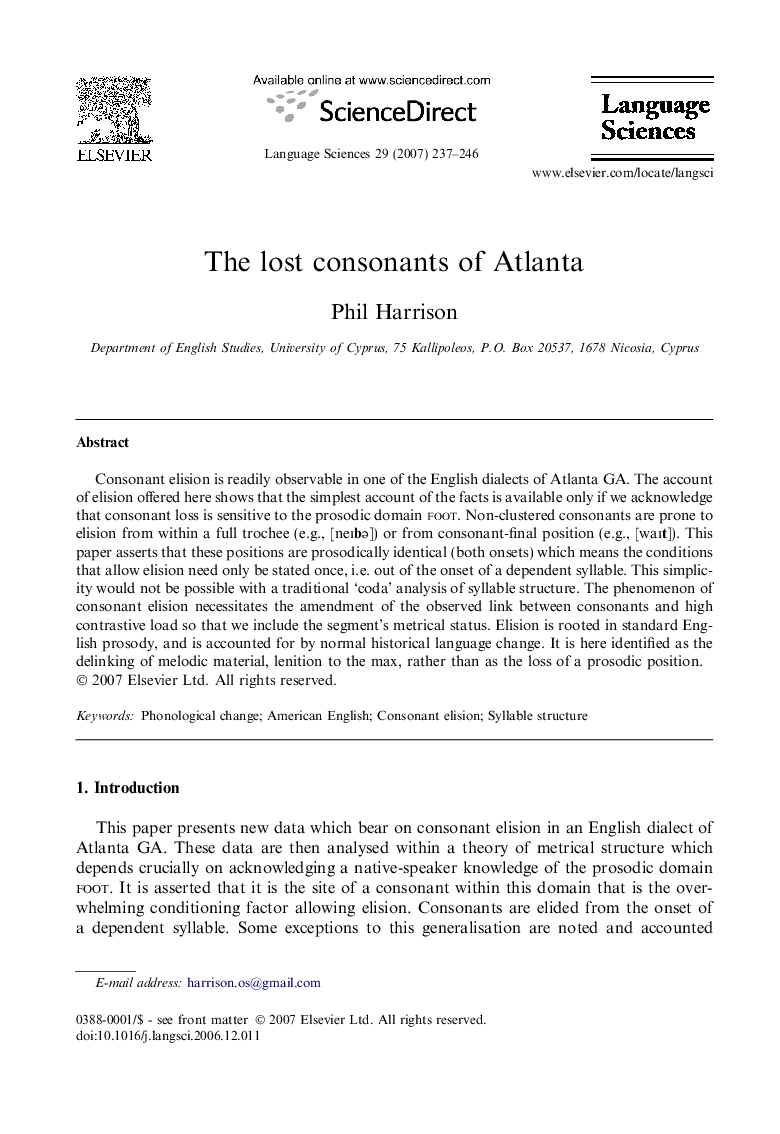| Article ID | Journal | Published Year | Pages | File Type |
|---|---|---|---|---|
| 1103413 | Language Sciences | 2007 | 10 Pages |
Abstract
Consonant elision is readily observable in one of the English dialects of Atlanta GA. The account of elision offered here shows that the simplest account of the facts is available only if we acknowledge that consonant loss is sensitive to the prosodic domain foot. Non-clustered consonants are prone to elision from within a full trochee (e.g., [neɪbÉ]) or from consonant-final position (e.g., [waɪt]). This paper asserts that these positions are prosodically identical (both onsets) which means the conditions that allow elision need only be stated once, i.e. out of the onset of a dependent syllable. This simplicity would not be possible with a traditional 'coda' analysis of syllable structure. The phenomenon of consonant elision necessitates the amendment of the observed link between consonants and high contrastive load so that we include the segment's metrical status. Elision is rooted in standard English prosody, and is accounted for by normal historical language change. It is here identified as the delinking of melodic material, lenition to the max, rather than as the loss of a prosodic position.
Keywords
Related Topics
Social Sciences and Humanities
Arts and Humanities
Language and Linguistics
Authors
Phil Harrison,
